#american experience pbs
Explore tagged Tumblr posts
Text
oh also FYI there's a lot of PBS documentaries on youtube for free uploaded by pbs themselves. nova, american experience, frontline--it's there!
4 notes
·
View notes
Text
I recently wrote about my opinion on PBS American Experience's "The American Vice President" documentary, which was good but I thought it could have been better. Last night, I stumbled upon this documentary that is available free with ads on YouTube called "President In Waiting" about the modern Vice Presidency, and it's GREAT!
I had never even heard of this documentary before last night, but it's a very straightforward look at the modern Vice Presidency. There is no narrator, no random talking heads, just interviews with Presidents Carter, Clinton, George W. Bush, and Obama, as well as Vice Presidents Mondale, Quayle, Gore, Cheney, Biden (it was filmed before Biden was elected President), and Pence, and it's those guys telling the story of the modern Vice Presidency, the relation between the President and the Vice President, and their personal experiences in the jobs. There are some really great stories in there, too, and a hilarious one at this point of the documentary regarding President Bush, Vice President Cheney, and their dogs at Camp David. I definitely recommend checking out "President In Waiting" on YouTube if you have the time.
#History#Vice Presidents#Veeps#Vice Presidency#Vice President of the United States#The American Vice President#PBS American Experience#President In Waiting#History Documentaries#Documentaries#Walter Mondale#Jimmy Carter#President Carter#Vice President Mondale#Dan Quayle#Vice President Quayle#Al Gore#Vice President Gore#Bill Clinton#President Clinton#Dick Cheney#Vice President Cheney#George W. Bush#Bush 43#President Bush#Joe Biden#Vice President Biden#Barack Obama#President Obama#Mike Pence
45 notes
·
View notes
Text
"Nazi Town, USA" is a 2024 feature in PBS's American Experience series. It looks into the surprising degree of influence which Nazis had in the United States in the 1930s. There were even Nazi summer camps for kids.
It can be viewed (probably for a limited amount of time) at the series link above. Here's a preview...
youtube
To explore the topic more deeply, check out Rachel Maddow's excellent 8-episode podcast Ultra.
Rachel Maddow Presents: Ultra | an MSNBC original podcast
Ultra has somewhat more emphasis on Nazi attempts to penetrate government.
Those espousing Nazi-friendly views in the 1930s did not disappear when the US entered World War II and fascism became very unfashionable. Those half-hidden feelings hibernated and occasionally emerged from time to time to poison discourse and endanger democracy. There are obvious echos of that movement today.
#nazis#nazi town usa#german-american bund#the american experience#pbs#1930s#us history#fascism#the great depression#rachel maddow#ultra#donald trump#maga#election 2024#freedom vs. dictatorship
96 notes
·
View notes
Text

the nine University of Washington students who took the rowing world and the nation by storm when they captured the gold medal at the 1936 Olympic Games in Berlin. The Boys of ’36 will show how the team overcame psychological, physical, emotional and economic hardships to beat not only East Coast Ivy League teams but Adolf Hitler’s elite German rowers. Their surprise triumph gave hope to a nation struggling to recover from the Great Depression.
#the boys of ‘36#american experience#pbs#rowing#the olympic games#the boys in the boat#history#us olympic team#my edits#don hume#joe rantz#george hunt#jim mcmillin#john white#gordy adam#charles day#roger morris#bobby moch#university of washington
29 notes
·
View notes
Text
Atomic Secrets: The Scientists Who Built The Atom Bomb 💣
Science and the military converged under a cloak of secrecy at Los Alamos National Laboratory. As part of the Manhattan Project, Los Alamos — both its very existence and the work that went on there — was hidden from Americans during World War II.
Many of the thousands of scientists on the project were not officially aware of what they were working on. Though they were not permitted to talk to anyone about their work, including each other, by 1945 some had figured out that they were in fact building an atomic bomb.
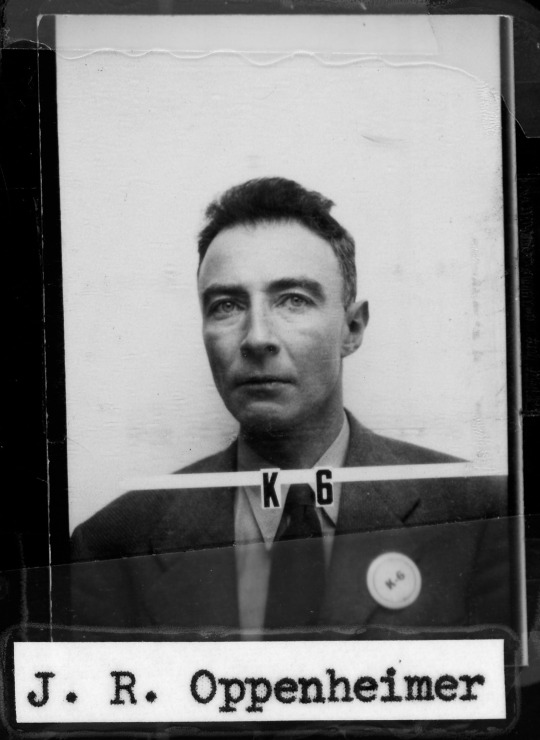
In 1943 J. Robert Oppenheimer was named the director of the Bomb Project at Los Alamos, a self-contained area protected -- and completely controlled -- by the U.S. Army. Special driver's licenses had no names on them, just ID numbers. Credit: Courtesy of the Los Alamos National Laboratory Archives

Robert Oppenheimer's wife Kitty was not above scrutiny. All who were affiliated with the project -- and their spouses -- were thoroughly screened and had a security file with the FBI. Credit: Courtesy of the F.B.I.
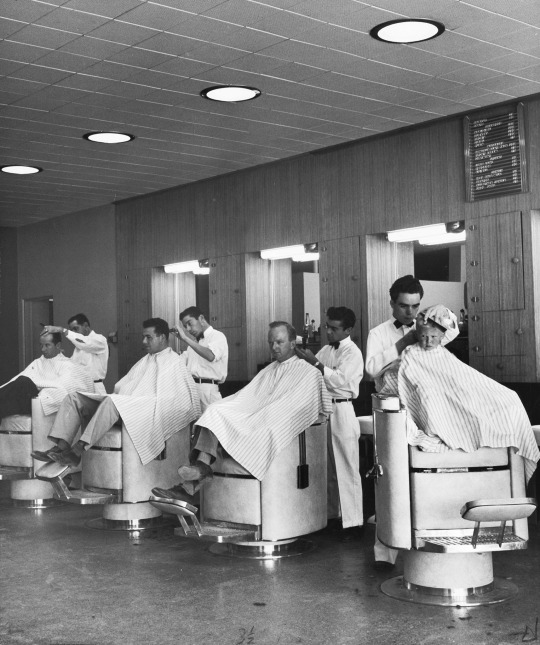
Less than a year after Oppenheimer proposed using the remote desert site for the laboratory, Los Alamos was already home to a thousand scientists, engineers, support staff… and their families. By the end of the war the population was over 6,000, and the compound included amenities like this barber shop. Credit: Time Life/Getty Images

Atomic Bomb Project employees having lunch at Los Alamos. Though food was often in scant supply, residents made the best of life in their isolated community by putting on plays and organizing Saturday night square dances. Some singles’ parties in the dormitories reportedly served a brew of lab alcohol and grapefruit juice, cooled with dry ice out of a 32-gallon GI can. Credit: Copyright Bettmann/CORBIS

Completely self-contained, the Los Alamos facility did not officially exist in its early years except as a post office box. Scientists’ families were mostly kept in the dark about the nature of the project, learning the truth only after the bomb was dropped on Hiroshima. Credit: Courtesy of the Los Alamos National Laboratory Archives

Credited with inventing the cyclotron, University of California-Berkeley physicist Ernest Lawrence (squatting, center) looks on as Robert Oppenheimer points out something on the 184” particle accelerator. Harvard University supplied the cyclotron that was used to develop the atomic bomb. Credit: Copyright CORBIS
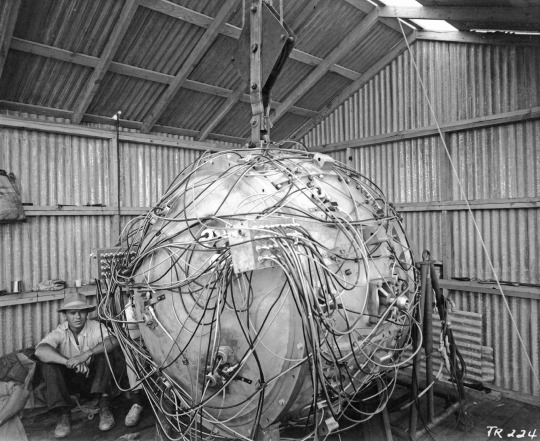
The Trinity bomb was the first atomic bomb ever tested. It was detonated in the Jornada del Muerto (Dead Man’s Walk) Desert, near Alamogordo, New Mexico, on July 16, 1945. The test was a resounding success. The United States would drop similar bombs on Japan just three weeks later. Credit: Courtesy of the Los Alamos National Laboratory Archives

Oppenheimer and General Leslie Groves inspect the melted remnants of the 100-foot steel tower that held the Trinity bomb. Ensuring that the testing of a bomb with unknown strength would remain completely secret, the government chose a location that was so remote they had to import their water from over 150 miles away. Credit: Copyright CORBIS

Oppenheimer and General Leslie Groves stand in front of a map of Japan, just five days before the bombing of Hiroshima. Credit: Copyright CORBIS

Though there was no evidence that Oppenheimer had betrayed his country in any way, several officials called his loyalty into question in the Cold War environment of 1954. After being subjected to months of hearings, “the most famous physicist in the world” eventually lost his government security clearance. Credit: Reprinted courtesy of TIME Magazine
#Atomic Secrets#Scientists#Atomic Bomb#American 🇺🇸 Experience#NOVA | PBS#Los Alamos National Laboratory#Manhattan Project#World War II#J. Robert Oppenheimer#Katherine Oppenheimer#New Mexico#Hiroshima | Nagasaki#University of California-Berkeley#Harvard University#Jornada del Muerto (Dead Man’s Walk) Desert 🐪#Alamogordo New Mexico#General Leslie Groves#Japan 🇯🇵#TIME Magazine
21 notes
·
View notes
Text
i am watching a two-part episode of pbs' american experience entitled "the vote" and it's lowkey blowing my mind. the repeated failures of well-organized, well-funded efforts to enfranchise women really put current organizing efforts into perspective. like, the organized effort to secure the vote for (white) women began pre-civil war and did not come to fruition for 70 years.
and when it did finally happen, it was only done with concessions that sacrificed black voters to southern states, and even then, it just barely passed. the fact that woodrow wilson came to support it only happened because he was desperate for a political win and believed securing a new voting bloc would do it.
i came out of the documentary incredibly disdainful toward the individual white woman at the forefront of the movement, but i nonetheless respect that they truly dedicated their lives to a cause at a time when they were absolutely drowning in opposition.
it is really fascinating, well worth the donation to pbs to view it (it's member-locked). i think the fact that just a century ago, the question of women's rights to participate in society was so fraught really puts into perspective the current debates around gender and i think a lot of folks would do well to take that into consideration. it's not to say we should be thankful for what we have, but more so to be reminded that what we might take for granted is actually built on relatively fragile ground.
3 notes
·
View notes
Text
Inventions from the Sun Queen (careful with that moniker, lady, or Tennessee will ban you).
2 notes
·
View notes
Text
Hell, there was someone inside the venue who tried to run up and punch the guy on stage at the time. He got apprehended and escorted out. But he tried!
On Feb. 20th, 1939, the German-American Bund, an American Nazi party, held a giant rally at Madison Square Garden in NYC
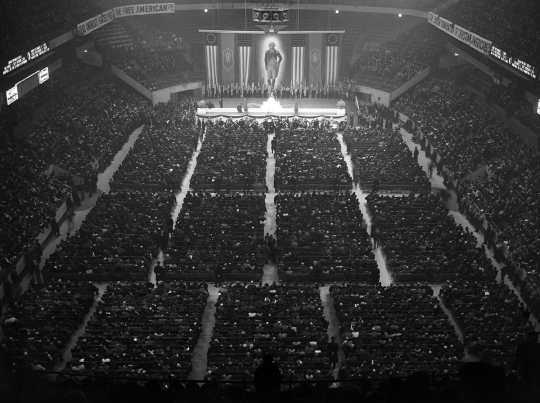
They adopted George Washington as their icon, calling him the “First Fascist.” Check out the “Fight Jewish Domination of Christian America” banner and the advertisement for the “Real Press” the “Free American” propaganda paper.
And just like today there was a counter-protest outside, one that was met with heavily armed police
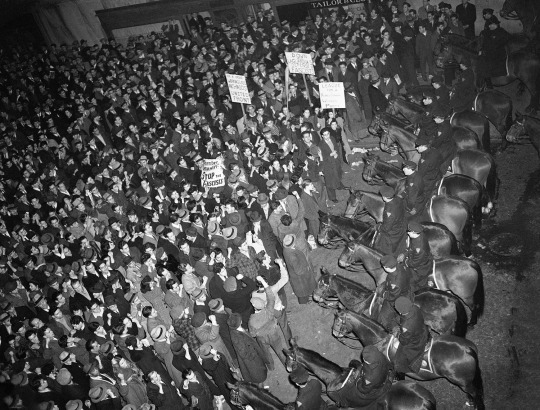
Guess what happened when any of the Nazis so much as dared to step outside the Garden

Yeah, punched in the jaw. Even the “American Fuhrer” Fritz Kuhn was rushed on the stage by a Jewish man who tried to, wait for it, punch him in the face.
And guess what the media called these people? “Rabid anti-Nazis” who “clashed with police.” They made the anti-Nazi side seem crazed and violent and the Nazis sympathetic victims just trying to Exercise Free Speech.
This was 1939. The height of Nazism in Germany, just before the Final Solution. Liberals chose to demonize Nazi punching in the 1930′s, but guess what? It worked then, and it’ll work now.
Punch Your Local Nazi
#I learned about this from the PBS American experience episode#nazi town usa#they go over the history of the bund and cover this event#that was also where I learned that there were jewish boxing clubs in New Jersey#and they would wait outside nazi meetings and beat them up after
76K notes
·
View notes
Text
Jimmy Carter The President
Source:The Movie Gourmet with a look at the American Experience documentary about Jimmy Carter. Source:The New Democrat “In PBS’ American Experience documentary Jimmy Carter, The New Yorker writer and former Carter speechwriter Henrik Hertzberg says: Jimmy Carter was what the American people always SAY they want – above politics, determined to do the right thing regardless of political…
#1980#America#American Democracy#American Experience#American Politicians#American Voters#Center Right#Classical Liberals#Democracy#Democratic Party#George Carlin#Georgia#Hendrik Hertzberg#Jimmy Carter#Liberals#New Democrats#PBS#President Jimmy Carter#The 1970s#The Movie Gourmet#The White House#U.S. Government#United States#Washington#Washington DC
0 notes
Text
October 1, 2024

American Experience (1988):
SEASON 37 PREMIERES TODAY!
GENRES: Documentary
NETWORK: PBS
Description: TV's most-watched history series brings to life the compelling stories from our past that inform our understanding of the world today.
#tv shows#tv#tv premiere#american experience#american experience tv#documentary#documentary tv#PBS#info
0 notes
Note
Did you watch the pbs documentary on the vice presidents yet and what did you think? And what vp that never became president do you think would have been best qualified to be president?
Yes, I was very much looking forward to PBS American Experience's "The American Vice President," and watched it as soon as it was released. I'm basically the target audience for documentaries like that, so I always appreciate and enjoy them. I will say that I thought that there were a lot of missed opportunities in it, however. I was really hoping that there would be some short biographical pieces on the various Vice Presidents, particularly many of the earlier VPs that nobody knows anything about. There are some really fascinating stories that could have been told about them, so I was a little bummed we didn't get that.
For the most part, the episode focused on the idea of the Vice Presidency as opposed to individual Vice Presidents. And it spent a lot of time on succession and the 25th Amendment. Now, that is no surprise -- that's basically the reason the Vice President exists in the first place. But at times it felt more like a documentary on continuity of government than the Vice Presidency, and I just wish there would have been more time spent on the personalities who have served in the position over the past 235 years.
As for the second part of your question, I'm going to do what the documentary largely did and answer based on the Vice Presidents since World War II. Once the nuclear age was upon us, the Vice Presidency became a more important role for those continuity of government reasons, and the quality and experience of most Vice Presidential candidates has improved during that time because it was more necessary to choose a running mate who was capable of actually taking over as President than balancing the ticket regionally or ideologically.
Since World War II, I think the Vice President who was best equipped to become President but never did was obviously Al Gore. I have always been shocked that Gore never made another run for the White House after 2000, but I also imagine that it must be an absolutely soul-crushing experience to run for President, seemingly win (and definitely win the popular vote), only to have the Presidency awarded to your opponent by a party-line decision of the United States Supreme Court.
Another post-World War II VP who never became President in his own right but probably would have been good in the job was Nelson Rockefeller. Because of the circumstances and brevity of his time as Vice President, Rockefeller is often forgotten about, but he was considered a real contender for the Presidency on numerous occasions before he was appointed to fill the Vice Presidential vacancy created when Gerald Ford succeeded Richard Nixon in the White House after Nixon resigned. Rockefeller won four elections as Governor of New York, all by comfortable margins, and he never achieved his Presidential goal because the timing was just never right for him. His best bet as a Presidential candidate should have been 1964 or 1968, but after JFK's assassination, few Republicans wanted to run against LBJ less than a year later (and with good reason, LBJ's popular vote landslide was huge). And by the time the 1968 election rolled around it became clear that Richard Nixon had spent his years in political exile following his humiliating loss in the 1962 California Gubernatorial race building a powerful campaign machine that helped sweep him into office. But when it comes to experience, few VPs were better qualified than Vice President Rockefeller.
If you haven't seen "The American Vice President" from PBS's American Experience, I would definitely recommend checking it out. You can watch it (and many of American Experience's other excellent documentaries) on the PBS website. It's also currently available to watch for free via the PBS feed on YouTube.
youtube
#The American Vice President#PBS#American Experience#PBS American Experience#History#Documentaries#Vice President of the United States#Vice Presidency#Vice Presidential History#Politics#Presidential Politics#Presidency#Presidential Succession#25th Amendment#Vice Presidents#VP#Veep#Veeps#VPOTUS
26 notes
·
View notes
Text
The Eugenics Crusade | Full Documentary | AMERICAN EXPERIENCE | PBS
youtube
1 note
·
View note
Text
A real banger from American Experience - infuriating how time is a complete, unbroken circle.
#news#politics#journalism#legal news#pbs#american experience#riot#american history#over and over#racial justice
0 notes
Text
The Bombshell Political Report So Shocking A U.S. President Tried To Pretend It Didn't Exist! LBJ Tried To Torpedo The Official Kerner Commission Record. Instead It Became A Bestseller
— May 10, 2024 | Jelani Cobb
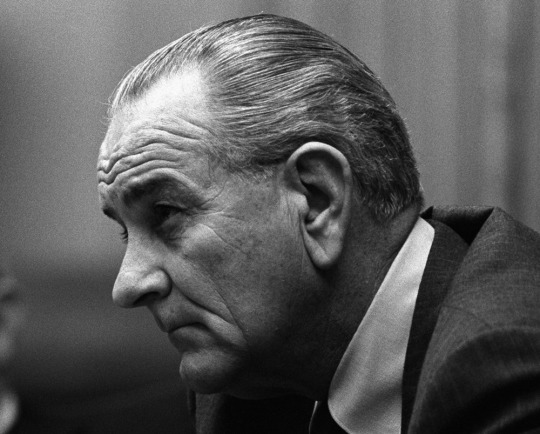
President Lyndon Baines Johnson listens during a meeting in the White House Cabinet Room, March 26, 1968. LBJ Presidential Library.
When President Lyndon Baines Johnson created the [Kerner] commission in July 1967 it was tasked with understanding what had happened up to that moment. Nearly two dozen uprisings or, in the antiseptic language of the report, “civil disorders,” had occurred between 1964 and 1967, with the largest and most destructive taking place in the Watts neighborhood in Los Angeles over the course of five days in August 1965.
Kerner has endured not simply for its prescience but also for the breadth of its analysis of the moment when it was conceived. The National Advisory Commission on Civil Disorders, which became more commonly known as the Kerner Commission—a reference to then-governor of Illinois Otto Kerner, who served as its chairman—was created by President Lyndon B. Johnson’s Executive Order 11365 on July 28, 1967. The order was issued as entire stretches of the city of Detroit lay smoldering.
On July 23, 1967, a police raid on an after-hours bar in Detroit sparked an explosion in which residents hurled rocks and bottles at police and culminated in a nearly week-long uprising marked by arson, looting, and forty-three deaths. Just eleven days earlier, the city of Newark had detonated following the assault on John Smith, a Black cab driver, by white police officers. The reactions in the community were immediate and incendiary. In the chaos of social retribution that ensued, twenty-six people were killed and hundreds more injured, while the city sustained an estimated ten million dollars in damage.
Newark and Detroit were just the most notable of more than two dozen American cities that ignited in revolts in that summer of 1967. It appeared as though a valve of the city reservoir had been opened. An apocalyptic fury, the response to decades of discriminatory policy and centuries of racial exploitation, suddenly spewed out in American cities.
Johnson charged the eleven-member Kerner panel with answering three questions: “What happened? Why did it happen? What can be done to prevent it from happening again and again?” These were Johnson’s precise words. Addressing these questions, however, would mean answering dozens of subsidiary questions the roots of which lay deeply tangled in American history and public policy.
The members themselves represented a cross section, albeit not a representative one, of domestic interests. Chaired by Kerner, the second-term Democratic governor of Illinois, the commission included two of his fellow Democratic elected officials, Congressman James Corman, the fourth-term representative of California’s twenty-second district, and freshman senator Fred R. Harris of Oklahoma. They were joined by three Republicans, New York City mayor John V. Lindsay, Rep. William M. McCulloch of Ohio’s fourth district, and Edward Brooke, the freshman Massachusetts lawmaker and the sole African American serving in the United States Senate at the time.
By current standards the commission was overwhelmingly white (nine of the eleven members) and male (ten of eleven). Katherine Peden, the commerce secretary of Kentucky, was the sole female commission member. Roy Wilkins, the political moderate and executive director of the NAACP, joined Brooke as the only Black people at the table. In addition, I. W. Abel, president of the United Steelworkers of America, represented labor in the proceedings, and Herbert Jenkins, the police chief of Atlanta, Georgia, represented law enforcement. Charles Thornton, the CEO of Litton Industries, spoke for the manufacturing sector.
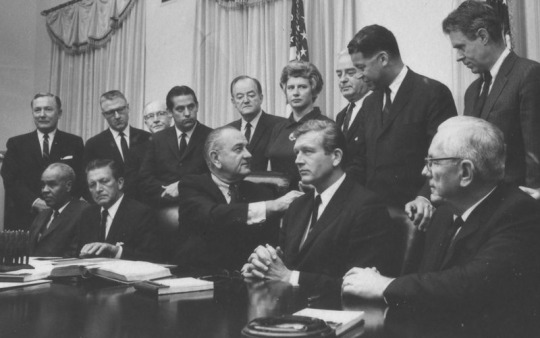
President Lyndon Johnson (seated, center) shakes hands with members of the Kerner Commission. July 29, 1967. White House Photo Office Collection, LBJ Presidential Library.
What differentiated the Kerner Commission from the outset was the historical scope of the investigations: the members were not seeking to understand a singular incident of disorder, but the phenomenon of rioting itself. Despite the heterogeneity of interests, if not the bipartisan backgrounds, of the members, the concluding report spoke with a strikingly unified voice about the problems that the various committee participants sought to understand. And that voice was an unabashedly integrationist one. Their most immediate and salient observation was that, even though the police had been involved in these most volatile incidents, American cities were not simply facing a crisis of policing. Rather, police were simply the spear’s tip of much broader systemic and institutional failures.
[T]he Kerner Report noted that the “problem” had been, first and foremost, inaccurately diagnosed. The so-called Negro problem was, in fact, a white problem. Or, as the report noted in one of the oft-quoted sections of the summary, “What white Americans have never fully understood—but what the Negro can never forget—is that white society is deeply implicated in the ghetto. White institutions created it, white institutions maintain it, and white society condones it.”
In a best-case scenario, Kerner would have become a kind of guidebook for the War on Poverty policies then being enacted by the Johnson administration. In more practical terms, the commission recommended new community-based guidelines covering how police needed to interact with citizens of “the ghetto,” as Black communities were dubiously classified in the report. It devoted an entire chapter to the ways in which justice should be administered in the course of riots; it suggested a national network of neighborhood task forces, local institutions that could bypass the bureaucracy and red tape of city administration and head off problems before they erupted into crises. It suggested “neighborhood service centers” to connect residents of these communities with job placement and other forms of assistance and proposed expanded municipal employment as a means of diminishing chronically high unemployment in these areas.
Perceptively, its members suggested that the monochromatically white news media that reported on these uprisings was also a symptom of the bigger problem. That social upheaval that had been created by overwhelmingly white institutions and maintained by said white institutions was then investigated and reported upon by yet another overwhelmingly white institution constituted, in their assessment, a racial conflict of interest. They closed with a raft of specific recommendations for housing, employment, welfare, and education. Kerner was possibly a victim of its own meticulousness. The report brims with suggestions. One reason why its proposals were not realized might be that it simply made too many of them.
The commission could not have known when it released its findings in March 1968 that it was issuing a preface, not a postscript. Martin Luther King Jr. was assassinated the following month, and more than one hundred American cities exploded into just the type of violence that the Kerner Commission had sought to understand if not prevent. [T]he Report was fated, from the moment it reached shelves, to operate more crucially as a forecast than a review. “Our Nation,” it warned in 1968, “is moving toward two societies, one black, one white—separate and unequal.”
— Excerpted From "Introduction" By Jelani Cobb, From The Essential Kerner Commission Report, Edited By Jelani Cobb, With Matthew Guariglia.
#Article#The American Experience#PBS | NOVA#President Lyndon Baines Johnson#The Essential Kerner Commission Report
3 notes
·
View notes
Text
Watch "Nazi Town, USA | Full Documentary | AMERICAN EXPERIENCE | PBS" on YouTube
youtube
"History doesn't repeat so much as it rhymes."
0 notes
Video
youtube
Chapter 1 | The Boys of '36 | American Experience | PBS
1 note
·
View note